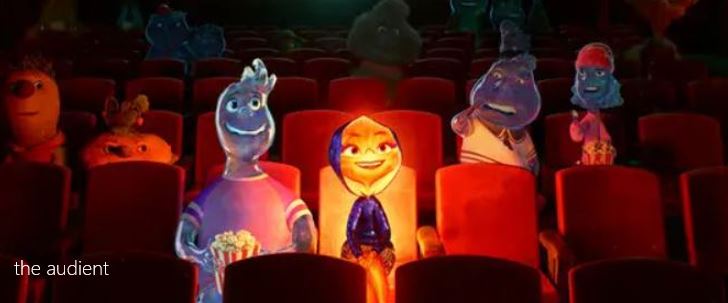But should there even be (bee) episodes? Shouldn't this have been a movie? You know, something on the order of the Nathan Lane movie Mouse Hunt, only better?
There are nine episodes in the show, and because most of the episodes are around 10 minutes, with only the first running a longer 19, the total running time for the show is 108 minutes. That's a tad long for a comedy, but it shortens right up once you realize that about two minutes of each episode is devoted to the end credits. If you subtract 18 minutes of credits, you are right down to 90 minutes.
It's another sure sign of something that seems increasingly clear: Viewers prefer watching TV shows to movies.
I hear Netflix is starting to move away from some of its heavier investments in expensive movies with big stars. I read recently that the upcoming Russo-directed The Gray Man, starring Ryan Gosling and Chris Evans, may be among the last of the high-profile, should-have-gotten-a-theatrical-release movies we will see Netflix putting out for a while. (The Gray Man did actually get a theatrical release on Friday, but will debut on Netflix just a week later.)
Now, an action thriller like that doesn't really work diced up as nine episodes, but a comedy like Man vs. Bee? That's a different story.
And despite my preference for movies over TV, I'm not sure it's the wrong thing to do.
If Man vs. Bee had been a movie, I'm not sure we would have watched it. I probably would have watched it myself -- gotta add it to the list -- but it probably wouldn't have been prioritized as a family viewing. Although the kids seem more or less as eager as ever to watch movies, my wife is definitely not. I tried to get the new Netflix animated movie The Sea Beast on the schedule as a family viewing last weekend to review it, and failed. I'm hoping I might get another shot tonight.
With Man vs. Bee passing only about ten minutes at a time, however -- or eight minutes, really, if you exclude the credits -- it's been a snackable pleasure our family can enjoy together, on weekend nights when we eat in front of the TV instead of at the table. In fact, so short are the episodes that we can, and always do, roll into a second, an indulgence we usually don't opt for when we watch a 30-minute or hour-long show. In fact, our biggest problem is getting through it too quickly -- we want this pleasure to draw out as long as it can.
The creators -- Atkinson and William Davies -- were clearly conscious of the fact that their content was approximately feature length. The Wikipedia entry on the series quotes Atkinson as describing the creative process as producing content roughly the length of a feature and then editing it into ten episodes. (How it decreased to nine, the entry does not stipulate.) They had to go about the task a bit differently than if it were a normal feature, though, as episodes require a cliffhanger at the end of each. Though set pieces in a movie may roughly break down that way, it usually wouldn't work out perfectly at those approximate ten-minute intervals.
It's customary for a person in my position to wring his hands over further evidence of the decline of movies. Consider my hands wrung.
Until I see a significant number of other examples of this, though, it's probably too early to worry about this being a trend others will follow. I still can't keep on top of the number of movies released on different platforms in any given year, and that's the way I like it.


No comments:
Post a Comment